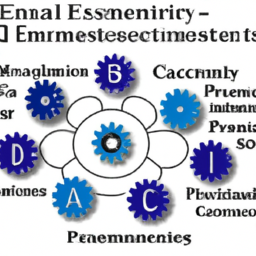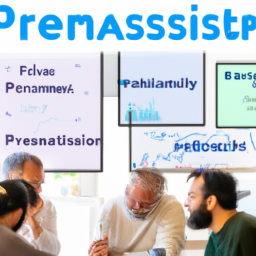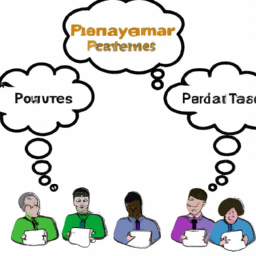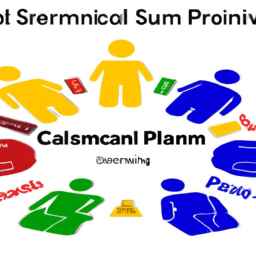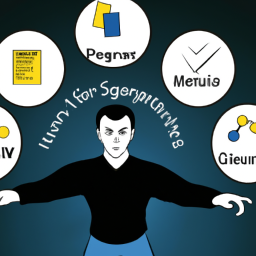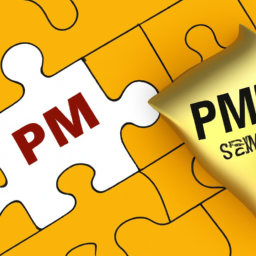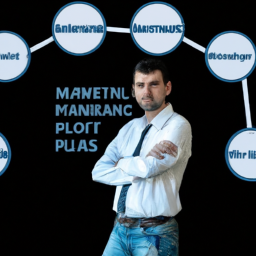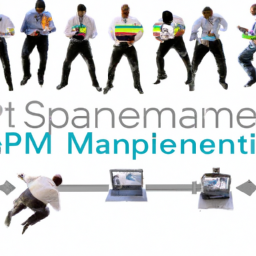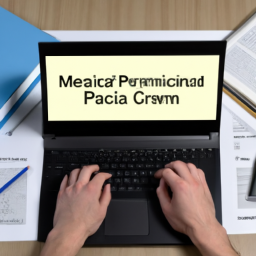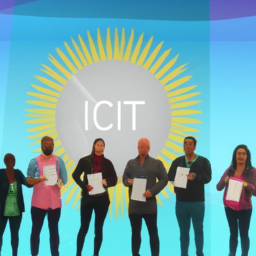So, you think you’ve mastered agile? Well, get ready to redefine what mastery truly means. In this article, we’re going to show you how to conquer the PSM II exam and solidify your agile expertise.
No more guessing or second-guessing – it’s time to take your agile skills to the next level. Get ready to dive deep into advanced scrum knowledge, enhance your leadership skills, and develop a winning strategy for exam success.
Are you up for the challenge? Let’s get started.
Key Takeaways
- The PSM II Exam assesses advanced Scrum knowledge and its application through multiple-choice questions, case studies, and essay questions.
- Developing an agile mindset and embracing agile principles and values are crucial for mastering Scrum and achieving success in the exam.
- Advanced Scrum knowledge involves implementing continuous integration, creating cross-functional teams, utilizing agile metrics, and exploring advanced retrospective techniques.
- Enhancing agile leadership skills, such as clear communication, fostering a culture of trust and accountability, and empowering team members, is essential for success in the exam.
Understanding the PSM II Exam
You should understand the PSM II Exam before attempting to conquer it. To do that, it’s important to familiarize yourself with the exam structure and gather the right study resources.
The PSM II Exam is designed to assess your knowledge and understanding of advanced Scrum topics and your ability to apply them in real-world scenarios. It consists of multiple-choice questions, case studies, and essay questions.
To prepare for the exam, you can use various study resources such as Scrum.org’s official website, practice exams, recommended readings, and online courses.
Mastering Agile Principles and Values
Understanding and embracing the principles and values of agility is crucial in achieving mastery. To truly master agile practices, you must adopt an agile mindset and commit to continuous improvement. This means being open to change, embracing collaboration, and constantly seeking ways to enhance your processes. By embodying the agile mindset, you can unlock the full potential of agility and drive success in your projects.
To illustrate the importance of agility, let’s explore some key principles and values in a table format:
| Principles | Values |
|---|---|
| Individuals and interactions over processes and tools | Individuals and interactions are the foundation of successful projects. Focus on building strong relationships and effective communication. |
| Working software over comprehensive documentation | Prioritize tangible results and working software over excessive documentation. Deliver value to your customers early and often. |
| Customer collaboration over contract negotiation | Involve your customers throughout the project to ensure their needs are met. Collaborate closely with them to gather feedback and make necessary adjustments. |
| Responding to change over following a plan | Embrace change as a natural part of the process. Be flexible and adaptable, adjusting your plans as needed to achieve the best possible outcomes. |
Developing Advanced Scrum Knowledge
To deepen your understanding of Scrum, it’s important to delve into advanced concepts and practices. Here are four advanced Scrum techniques that can enhance your mastery of this agile framework:
-
Continuous Integration: Implementing a continuous integration process allows for frequent integration of code changes into a shared repository, ensuring that any conflicts or issues are identified and resolved early on.
-
Cross-Functional Teams: Creating cross-functional teams with members who possess diverse skills and expertise enables faster decision-making and promotes collaboration across different areas of the project.
-
Agile Metrics: Utilizing agile metrics such as velocity, burndown charts, and cycle time can provide valuable insights into team performance, allowing for better planning and continuous improvement.
-
Advanced Retrospectives: Going beyond the basic retrospective format, advanced techniques like the Starfish retrospective or the Lean Coffee format can encourage more meaningful discussions and generate innovative ideas for process improvement.
Enhancing Agile Leadership Skills
Enhancing your agile leadership skills is crucial for effectively guiding and supporting your team in the Scrum framework.
To excel as an agile leader, it is essential to develop an agile mindset and practice effective communication. Cultivating an agile mindset means embracing change, fostering collaboration, and promoting continuous improvement.
As a leader, you must communicate clearly and concisely, ensuring that everyone understands the goals, priorities, and expectations. Effective communication involves active listening, asking insightful questions, and providing constructive feedback.
By adopting these practices, you can create a culture of trust, transparency, and accountability within your team. Furthermore, you should encourage open and honest discussions, empowering your team members to share their ideas and concerns.
Strategies for Exam Success
Strategies for exam success can be implemented by creating a study schedule and practicing active recall techniques. Here are four practical tips for effective exam preparation and time management:
-
Create a study schedule: Plan your study sessions in advance and allocate specific time slots for each subject or topic. This will help you stay organized and ensure that you cover all the necessary material.
-
Practice active recall: Instead of simply re-reading your notes or textbooks, actively engage with the material by testing yourself. Use flashcards, practice quizzes, or teach the information to someone else. This will improve your retention and understanding of the material.
-
Break it down: Break down the exam content into manageable chunks. Focus on one concept or topic at a time, and once you feel confident, move on to the next. This approach will prevent overwhelm and allow for deep learning.
-
Prioritize self-care: Remember to take breaks, exercise, and get enough sleep. Taking care of your physical and mental well-being is crucial for optimal performance during exams.
Frequently Asked Questions
How Much Time Do I Have to Complete the PSM II Exam?
You have limited time to complete the PSM II exam. Time management strategies are crucial for success.
Prioritize your study time by focusing on the most important topics. Practice with sample questions to improve your speed and accuracy.
Allocate specific blocks of time for studying and reviewing. Avoid distractions and create a conducive environment for concentration.
Break down your preparation into manageable tasks and set deadlines. Use time wisely to maximize your chances of passing the exam.
Is There a Passing Score for the PSM II Exam?
Yes, there is a passing score for the PSM II exam. It is important to aim for this score in order to demonstrate your mastery of agile practices.
The exam duration is 90 minutes, during which you will be tested on your understanding of advanced Scrum concepts and how to apply them in real-world scenarios.
Make sure to prepare thoroughly and familiarize yourself with the exam format to increase your chances of success.
Can I Retake the PSM II Exam if I Do Not Pass It on My First Attempt?
Yes, you can retake the PSM II exam if you don’t pass it on your first attempt. There is no limit to the number of times you can retake the exam.
However, keep in mind that each attempt requires a separate registration and payment.
To pass the PSM II exam, you must achieve a minimum passing score. It’s recommended to thoroughly prepare and study before retaking the exam to increase your chances of success.
Are There Any Prerequisites for Taking the PSM II Exam?
Before we get into the details of Redefining Agile Mastery: Conquering the PSM II Exam, let’s answer the question: Are there any prerequisites for taking the PSM II exam? Officially, there are none. However, it’s highly recommended that you have a solid understanding of Scrum and have obtained the Professional Scrum Master I (PSM I) certification. To prepare for the PSM II exam, you should study the Scrum Guide, practice with real-world scenarios, and deepen your knowledge of the Scrum framework.
Are There Any Resources or Study Materials Available to Prepare for the PSM II Exam?
To prepare for the PSM II exam, there are plenty of study resources available. You can find online courses, practice exams, and study guides that will help you understand the exam content and format.
These resources will give you a solid foundation to confidently approach the exam. Make sure to allocate enough time for studying and use the materials effectively to maximize your exam preparation.
Conclusion
So, you’ve made it to the end of this article, and let me tell you, you are now ready to conquer the PSM II exam like a true agile master!
By understanding the exam format and content, mastering agile principles and values, developing advanced scrum knowledge, and enhancing your agile leadership skills, you are well-equipped for success.
With these strategies in your arsenal, you’ll be unstoppable! So go ahead, dive into your studies with confidence and believe me, nothing can stand in your way!

